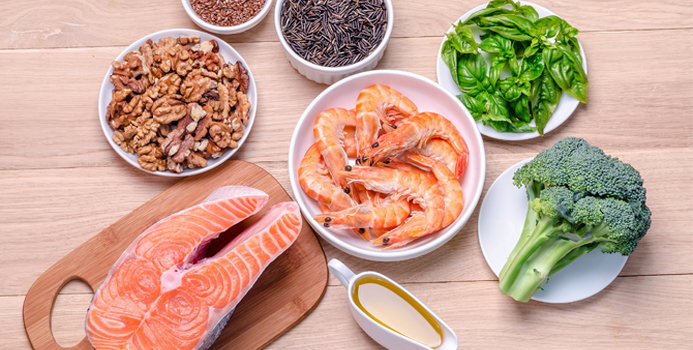Fats are more than just a power source for your body. Fats are essential nutrients built of about 16 different fatty acids. Fatty acids contain oxygen, hydrogen and carbon. The fats we consume in our diets are broken down by our bodies into glycerol and fatty acids, which are either stored or used to form lipids. Triglycerides are the form in which your body stores fats, circulating throughout the body in the blood stream or found stored in adipose tissue. Fats in the body work to help maintain your skin integrity, cushion your body's organs, protect and insulate your body and play key roles in brain and nervous system function.
Fats are separated into categories by the saturation of their chemical chains by hydrogen. Unsaturated fats are fatty acids with one or more double bond in their chain, thereby causing hydrogen atoms to be missing. Fats with one double bond are called monounsaturated fatty acids (MUFAs) and those with 2 or more double bonds, thereby having 2 or more missing hydrogen pairs, are called polyunsaturated fatty acids (PUFAs). Saturated fats are fats that have no double bonds, and have all their carbons bonded to hydrogens thereby being fully 'saturated.'
Unsaturated fats are typically considered the better choice. Monounsaturated fats are linked to lowering total cholesterol, lowering LDL cholesterol and may raise HDL cholesterol. Polyunsaturated fats lower total cholesterol and lower LDL cholesterol. But are also associated with lowering HDL cholesterol. Specific, unsaturated fats like omega-3 fatty acids have been shown to lower triglycerides in the blood, and lower total cholesterol. Many fats are shown to have different effects on the body.
Although new evidence is suggesting saturated fat is not as terrible a culprit to bad health as previous thought, the Academy of Nutrition and Dietetics still recommends keeping saturated fats to a minimum, or less than 10 percent of your total daily fat intake. Saturated fat may affect blood lipids by raising both total cholesterol and LDL cholesterol.
Trans fats have been shown to increase total cholesterol, increase LDL cholesterol and lower HDL cholesterol. These fats are formed during the process of hydrogenation of foods. Some trans fats are found naturally occurring in butter, some meats and milk but these have different effects on the body and have not been shown to raise cholesterol in the same way as the man-made trans fats.
Why Fat Choices Matter
Your body is constantly working to make, store, break down and send fats throughout the body for energy and other body processes. When your LDL cholesterol levels and total cholesterol levels become elevated, deposits called plaque begin to form in your blood vessels and arteries. As this fatty plaque builds up, your arteries become more narrow and keep oxygen and nutrients in your blood from being easily transported. This puts you at an increased risk of atherosclerosis, stroke and heart disease.
Recommendations
The Academy of Nutrition and Dietetics supports an intake of fat between 20-35% of your daily energy needs. They also recommend increasing the amount of Omega-3s and continuing to limit the amount of trans fats and saturated fats consumed in the diet.
The best way to get the fats your body needs is through consuming a variety of whole foods like nuts, seeds, fish, seafood, lean meats and poultry and balancing your fat intake with plenty of vegetables, fruits, beans and whole grains. Limit hydrogenated foods and aim to consume the majority of your daily needs by choosing unsaturated fat choices. Exercising, not smoking and focusing on getting plenty of fiber in the diet can support your healthy choices and limit plaque from building up.
Sources of Unsaturated Fats:
- soybean oil
- corn oil
- safflower oil
- canola oil
- olive oil
- sunflower oil
- lake trout
- salmon
- herring
- olives
- walnuts
- avocados

Emily DeLacey MS, RD is a Registered Dietitian and currently working in Jamaica as a HIV/ AIDS Prevention Specialist. She attended Central Washington University for her Bachelor's Degree in Science and Dietetics and continued on after her internship to Kent State University for her Master's Degree in Science and Nutrition, with a focus on public health and advocacy. She served as a U.S. Peace Corps Volunteer in Malawi 2012-2014 working as a Community Health Advisor in a rural village, immersing in the joys of life without electricity or running water. She has been to 20+ countries and 47 of the 50 states in the US. Traveling, adventuring and experiencing new cultures has made her a passionate advocate for the equality of nutrition and wellness for all people.



